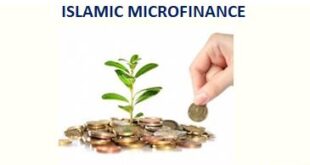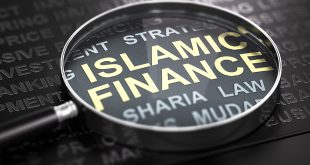How does one go about reducing poverty levels and providing micro finance (MF) in Muslim societies? How does one make a choice between the Islamic model of MF and the MF "best practices" that reflect wisdom and lessons learnt from decades of "real-life" MF experiments. The former is normative and largely an untested proposition in the context of a modern economy, notwithstanding a small number of recent experiments. The latter, on other hand, as proponents claim, are well-experimented and well-documented and made widely available among the global MF community. A significant contributor to this exercise has been the Consultative Group to Assist the Poor (CGAP), a multi-donor consortium dedicated to advancing microfinance. CGAP envisions a world in which poor people everywhere enjoy permanent access to a range of financial services that are delivered by different financial service providers through a variety of convenient delivery channels. It is a world where poor and low-income people in developing countries are not viewed as marginal but, rather, as central and legitimate clients of their countries’ financial systems. In other words, this vision is about inclusive financial systems, which are the only way to reach large numbers of poor and low-income people. As a way forward to realize this vision, CGAP has come up with a set of key principles of MF that together constitute the essence of "best-practices" MF.
These principles broaden the definition of MF from micro-credit to provision of an array of financial services, such as, savings, insurance and remittance as a panacea for the poor and the under-privileged to move out of poverty into a state of increasingly better standard of living. The principles advocate free pricing of the services. They emphasize that access to MF and not cost of MF should be under focus in designing and implementing a poverty alleviation strategy. The strategy should aim at sustainability through a shift from a charity-based donor-dependent approach to a market-based for-profits approach emphasizing systemic efficiency and transparency and restricting use of donor funds to temporary support in the initial stage of an MFI and capacity building. Recent writings advocate use of charity for providing social safety nets for the extremely poor who are unbankable and therefore, unserved by the for-profit MFIs. The principles also underscore inclusiveness and integration of MF with the formal financial system.
How should one deal with poverty under Islam? All principles or laws in Islam owe their origin to its holy book – the Quran and the sayings and deeds of its Prophet (peace be upon him) encapsulated in books of Hadith. Consider this saying of the Prophet (peace be upon him) that forcefully drives home the message. "There is no asceticism in Islam". Islam views poverty to be a curse to be eradicated through productive efforts unlike some world religions and philosophies that celebrate asceticism. There is therefore, a convergence between the objectives of Islam and the avowed aims of "best practices" MF.
While poverty eradication remains the cherished goal of Islam and MF "best practices" is there a degree of commonality too in their approaches and strategies to poverty alleviation? Lessons from real-life experiences reflected in the "best practices" MF indicate a dual approach – use of charity as well as "for-profit" micro finance. At the same time, donor funds should complement private capital, not compete with it. The charity-based approach should be restricted to either providing temporary start-up support designed to get an institution to the point where it can tap private funding sources, or devoted to capacity building to take care of the shortage of strong institutions and managers. A charity-based approach is also needed for providing social safety net to the extremely poor and the destitute and therefore, unbankable.
How does the above compare with the Islamic approach to dealing with the poor and alleviating poverty?
ZakahA tax that is the duty and social obligation of every Muslim. This as the fourth Pillar of Islam More and sadaqah as instruments of charity occupy a central position in the Islamic scheme of poverty alleviation. ZakahA tax that is the duty and social obligation of every Muslim. This as the fourth Pillar of Islam More is the third among five pillars of Islam and payment of zakahA tax that is the duty and social obligation of every Muslim. This as the fourth Pillar of Islam More is an obligation on the wealth of every Muslim based on clear-cut criteria. Rules of Shariah are fairly clear and elaborate in defining the nature of who are liable to pay zakahA tax that is the duty and social obligation of every Muslim. This as the fourth Pillar of Islam More and who can benefit from zakahA tax that is the duty and social obligation of every Muslim. This as the fourth Pillar of Islam More. The first and foremost category of potential beneficiaries is the poor and the destitute. A greater degree of flexibility exists with respect to beneficiaries of sadaqah.
The primary issue with zakahA tax that is the duty and social obligation of every Muslim. This as the fourth Pillar of Islam More and sadaqah-dependent institutions is the issue of sustainability as they are essentially rooted in voluntarism. Funds mobilized through charity could fluctuate from time to time and may not lend themselves to careful planning and implementation.
The issue of sustainability is addressed in the institution of awqaf through creation of permanent and income-generating physical assets. Awqaf has historically been the major vehicle for creating community assets. There are however, restrictions on development and use of assets under waqf for pre-specified purposes that introduce rigidity into the system.
While Islam strongly encourages charity from the giver’s point of view, it seeks to minimize dependence on charity from the beneficiary’s point of view and restricts the benefits to flow to the poorest of poor and the destitute, who are not in a position to generate any income and wealth.
A famous hadith not only underscores the above, but also demonstrates how to design and implement a strategy of poverty alleviation. The essence of the hadith is broken down into numbered statements so as to highlight the key principles and components of the strategy that follows from the hadith.
A man of the Ansar community came to the Prophet (peace be upon him) and begged from him.
(#1)
He (the Prophet) asked: Have you nothing in your house? He (the man) replied: Yes, a piece of cloth, which we wear, or which we spread (on the ground), and a wooden bowl from which we drink water.
(#2)
He (the Prophet) said: Bring them to me. He (the man) then brought these articles to him and he (the Prophet) took them in his hands and asked to the assembly of people: Who will buy these? A man said: I shall buy them for one dirham. He (the Prophet) asked twice or thrice: Who will offer more than one dirham? Another man said: I shall buy them for two dirhams.
(#3)
He (the Prophet) gave these to him and took the two dirhams and, giving them to the man of the Ansar, he said: Buy food with one of them and hand it to your family, and buy an axe and bring it to me.
(#4) He then brought it to him. The Prophet (peace be upon him) fixed a handle on it with his own hands
(#5) and said: Go, gather firewood and sell it, and do not let me see you for a fortnight.
(#6)
The man went away and gathered firewood and sold it. When he had earned ten dirhams, he came to him and bought a garment with some of them and food with the others.
(#7)
The Prophet (peace be upon him) then said: This is better for you than that begging should come as a spot on your face on the Day of Judgment. Begging is right only for three people: one who is in grinding poverty, one who is seriously in debt, or one who is responsible for compensation and finds it difficult to pay. (Sunan Abu Dawood, Kitab al-Zakah, Book 9, Number 1637)
The components of this hadith can be seen to emphasize the following fundamental conditions of a successful microfinance programme:
#1. Access of the poorest of the poor to the programme:
The Prophet (peace be upon him) was the spiritual as well as the political leader of the Muslims and he was accessible to the poor and the needy at all times for economic and financial assistance;
#2. Careful assessment of the financial health of the poor; enquiry blended with empathy; insistence on contribution and beneficiary stake:
Many failed MF programmes owe their failure to inadequate evaluation of the client’s financial condition. Provision of micro finance does not stand to reason for a person in need of social safety nets resulting in the funds being consumed away instead of being invested. The poor come in disparate categories with varying needs of consumption and productive investment and risk of delinquency and default. Microfinance programmes involving indiscriminate funding of the poor such as most government-managed ones are destined to fail.
This is one of the cornerstones of MF "best practices" that assert the government should have no role in direct or indirect provision of financial services and its role should be restricted to providing a supporting and enabling environment. Insistence on beneficiary stake is of course, a device to reduce moral hazard and enhance efficiency.
#3. Transformation of unproductive assets of the beneficiary into income-generating ones through rigorous valuation (on the basis of price discovery through auction method); Involvement of the larger community in the process:
Often the poor own high-market-value assets, such as, land in a prime city location without being able to derive income or benefit from the asset. While ownership of land does provide them with a bulwark against unforeseen adversities, this is an uneconomical and wasteful method of insurance. What is desirable here is a way to transform the unproductive asset into a productive one that could generate income. The original asset is not lost but transformed into an income-generating one.
The price at which the original asset is disposed of must be fair and should not take the form of a distress sale resulting in loss of value to the seller. Contemporary finance theorists find the auction system to be the most efficient process of discovery of the intrinsic worth or the fair price.
The involvement of the larger community in the poverty alleviation programme is also highly desirable for success of the programme. For many contemporary successful MFIs, the right strategy is to involve grass-root NGOs in the process.
#4. Meeting of basic needs on a priority basis and investment of the surplus in a productive asset:
Once again this highlights the need to take into account the consumption needs of the clients before expecting them to create wealth. The realization about the need for a social safety net and to link the same to micro finance at a later stage has come only recently in the MF industry.
#5. Direct involvement of the programme in capacity building in the run-up to income generation and technical assistance to the beneficiary; Commitment of top management of the programme:
This part of the hadith demonstrates a unique form of commitment and involvement on the part of the Prophet (peace be upon him) in the programme of poverty alleviation. The involvement could not be more direct and the commitment more pure.
#6. Technical assistance in the form of imparting requisite training to the beneficiary for carrying out the business plan/ income-generating project; monitoring through a time-bound schedule and impact assessment through a feed-back mechanism:
The need to establish an effective linkage between financial assistance and technical assistance is emphasized among MF professionals as never before. Also the importance of impact assessment can be hardly overemphasized.
#7. Transparent accounting of operational results and liberty to use part of income to meet higher needs.
In short, the Islamic approach to poverty alleviation is more inclusive than the conventional one. It provides for the basic conditions of sustainable and successful microfinance, blending wealth creation with empathy for the poorest of the poor. There are certain aspects of the Islamic approach that need added emphasis. One, transparency through meticulous accounting and proper documentation is a fundamental requirement of financial transactions in the Islamic framework. As the holy Quran asserts:
“O ye who believe! When you deal with each other, in transactions involving future obligations in a fixed period of time, reduce them to writing” and “Let a scribe write down faithfully as between the parties” (2:282)
The import and significance of this verse is often not fully understood. Indeed, lack of proper documentation and accounting by beneficiaries is a major challenge confronting microfinance. Proper accounting and accurate measurement of results of operations or profits is a pre-requisite for profit-sharing based mechanisms. They are no less important for lending operations. Indeed MF "best practices" emphasize on documentation and transparency as a fundamental requirement for success of any MF project.
Two, as discussed earlier, a common feature of successful microfinance experiments is group-based financing and mutual guarantee within the group. This is a highly desirable feature of Islamic societies. Mutual cooperation and solidarity is a norm central to Islamic ethics. The second verse of Surah Al Maida in the holy Quran says:
"Assist one another in the doing of good and righteousness. Assist not one another in sin and transgression, but keep your duty to Allah" (5:2)
The following hadith by the Prophet (peace be upon him) reinforces this principle of cooperation and mutual assistance.
“Believers are to other believers like parts of a structure that tighten and reinforce each other." (Al-Bukhari and Muslim)
Our discussion so far, has excluded the issue of product design. Conventional MF products are interest-based. Islamic MF products must be free from interest and several other elements forbidden under Islamic law. Contemporary mainstream Islamic finance has expended considerable effort in developing Shariah-compliant products and services for deposit mobilization, financing, remittance etc. using Shariah-nominate contracts that are free from the forbidden elements. These products with minor modifications if required, can be used for MF as well. Islamic scholars strongly favour "free pricing" of these products and services as the same is a fundamental norm. It may be noted that MF "best practices" also argue against price ceilings, even though the justification provided may be quite different.
Based on the discussion above, one finds that the Islamic approach to poverty alleviation should involve several layers of intervention. All kinds of assistance should be preceded by enquiry and assessment of financial health of the client. A charity based intervention inherent in the institutions of zakatA tax that is the duty and social obligation of every Muslim. This as the fourth Pillar of Islam. More and sadaqa is recommended to take care of consumption needs of the extremely poor and the destitute and create a social safety net, notwithstanding the never-ending debate on the desirability of using zakahA tax that is the duty and social obligation of every Muslim. This as the fourth Pillar of Islam More funds for investment and financing. The other institution of charity – the awqaf is ideal for creation and preservation of assets that can build capacity and provide technical assistance for skill improvement and development of human resources. The social safety net and technical assistance may then be linked to financial assistance. The financial assistance should aim at wealth-creation using Shariah-compliant for-profit modes with free pricing. The entire process of course, would need to be completely transparent with proper documentation, accountability and responsibility with a time-bound schedule. Along the way, less or zero-productivity assets may need to be transformed into more productive ones while ensuring minimal transaction costs. Provision of financing could involve formation of groups and be made in a graduated manner.
Before we conclude that the Islamic approach to MF and the MF "best practices" converge in many respects with the notable exception of product design, it is important to sound a note of caution. The above analysis is based on a rather tiny sample of ahadith. Therefore, care must be taken to avoid rigidly labeling the suggested approach as "the Islamic approach" to MF. The purpose of the present discussion is simply to demonstrate that there may not be any inherent conflict between the Islamic approach and much of the MF "best practices". At the same time, the religious and cultural sensitivities of the poor Muslim clients must be given due importance while designing financial products and services. This should be emphasized as an imperative for achieving the goal of poverty alleviation through enhanced financial inclusion in Muslim societies.
© Islamic Finance Today – Pioneer Publications (Pvt) Ltd
Post Disclaimer | Support Us
Support Us
The sailanmuslim.com web site entirely supported by individual donors and well wishers. If you regularly visit this site and wish to show your appreciation, or if you wish to see further development of sailanmuslim.com, please donate us
IMPORTANT : All content hosted on sailanmuslim.com is solely for non-commercial purposes and with the permission of original copyright holders. Any other use of the hosted content, such as for financial gain, requires express approval from the copyright owners.
 Sri lanka Muslims Web Portal Sri Lanka Muslims News Center
Sri lanka Muslims Web Portal Sri Lanka Muslims News Center
 Donate
Donate

